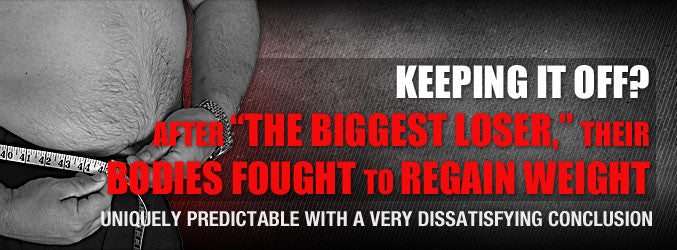
The human body is a remarkable entity. Cells are born, cells live, and cells die. They follow peculiar and typically predictable patterns. There are always anomalies, of course, but most of our bodies, most of the time, adhere to a universal set of rules. The body’s metabolism is one such mechanism. Always active, always consuming calories, but suddenly uniquely predictable with a very dissatisfying conclusion. Let’s learn more.
Unless you’ve been living under a rock without a television or streaming services for the past two decades, you’re likely aware of the hugely successful television series called “The Biggest Loser”. On this show, inactive, overweight contestants engage in exercise, diet, and lifestyle “camp” in an attempt to get in to better shape. Weekly weigh-ins show who is losing the most weight. The winner is the one who loses the most weight relative to their size. People of all shapes and sizes, skinny and overweight alike, love the show, as it is a source of inspiration, humor, and positive success.
However, as the NY Times noted this week, another universal truth has become apparent in terms of the contestants results AFTER they complete their stint on the show. Contestants were tracked and analyzed, and their results on the show – however spectacular – were not typical of their real-life results once they returned to regular everyday life. And the culprit? Metabolism!
The body fights very, very hard to regain a weight that it once had. Granted, when these competitors left the show, their metabolism was at a very low rate, as a result of the dieting and stress these competitors faced. They were originally that obese because they had big bodies, and average to low metabolisms. Well, their collective metabolisms dropped even further while doing the show. Sure, they lost weight, but often at a cost of the massive rebound which occurred once they got home.
According to the New York Times, most of the show’s past competitors have regained much, and often all of the weight, they lost while on the show. Some of the competitors have grown even heavier now! These results gave researchers something to chew on.
What has been a loss (perhaps best described as a failed weight loss) by these competitors has ended up to be a gain for the scientific field. Highly publicized weight loss cases involving a huge variety of contestants – with almost completely consistently results down the road when the weight is consistently regained… it blew some researcher’s minds!
Metabolism is the key to everything. Your metabolism is your body’s furnace. Always on, always firing, your metabolism is what burns calories in your body while you’re doing nothing. When you sleep, rest, watch television, or anything else involving minimal movement, your metabolism is always pumping away, using consumed calories for the purpose of maintaining body functions.
Any time a person loses weight, their metabolism falls. The body protects itself using a caveman-esque self-preservation mode. Human beings sense when more activity is required, and when less food is available to their body… and it preserves body fat and decelerates caloric burn, as a result. Yes, when you get lean, you’re giving your brain every signal to tell your body to stop getting lean.
This basic biological reality is one that cannot be fought, bought, or taught. But as an athlete, you can learn to work around it. Over 1/3 of the adults in the United States are obese, and the trend is that of an increase each year. The human body will continually fight back against weight loss, for years at a time. Some people really do everything right – but their body fights the fat loss. In the case of “The Biggest Loser” competitors, the body actually rebounds and puts them in a heavier spot than before, despite the added advantages of exercises and more sensible eating. Researchers are using the results of the show contestants to adjust what they thought they knew about fat loss – and so can you!
How should you, the strength or fitness athlete, use this information to your advantage? You can start by not dieting too harshly. Stress is the enemy when it comes to keeping your metabolism as high as possible. Don’t be hungry all of the time. Body conditions such as this trigger release of cortisol, a stress hormone, by the brain, which in turns leads to fat preservation and muscle burning – the exact opposite of your goals.
Eat clean foods, which are burned more efficiently by the body. Make sure that new changes to diet or supplements (which can be very useful for safely maintaining the metabolic rate) do not include too much sudden change. Stress & inflammation are your enemy, so try to stay healthy and avoid toxic foods, drinks, and environments which may slow down your fat loss process.
In the gym, you should be training with a modest and consistent moderate stress. Sprints and 1RM personal maximum lifts look great on your Facebook wall or SnapChat story, but they don’t do much to boost your metabolism. Keep your gym forays moderately timed (45 to 75 minutes) using sets of 8 to 12 repetitions. Your cardio should be moderate but never all-out paced. Keep your performances in the gym at high moderate ranges, but avoid extremes. Even though you’ll like the muscle gain results, it may come at a cost which includes reduced metabolism from the stress in which you’re subjecting your body.


